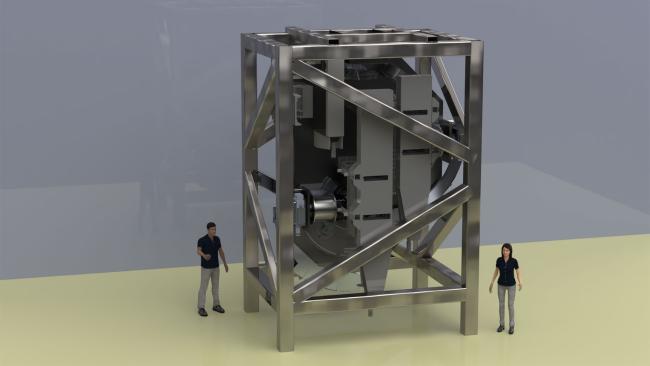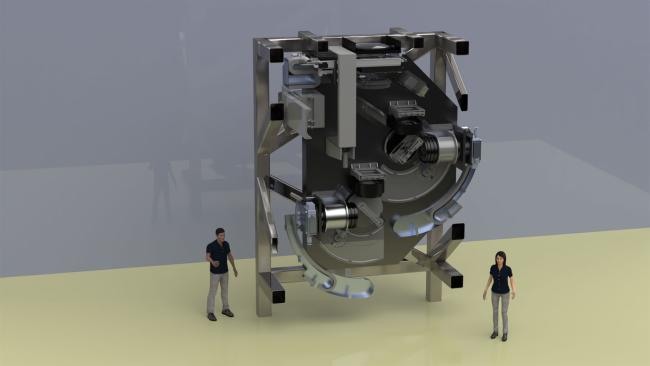GMACS
GMACS - Moderate Dispersion Optical Spectrograph for the Giant Magellan Telescope is a powerful optical spectrograph that will unlock the power of the Giant Magellan Telescope for research ranging from the formation of stars and planets to cosmology.
Share this Page

Computer model of GMACS in the laboratory.
Credit: Antonio Braulio Neto
GMACS - Moderate Dispersion Optical Spectrograph
GMACS is being developed for the entire Giant Magellan Telescope community by scientists and engineers at the Center for Astrophysics and at the Steiner Institute in Sao Paulo Brazil. Scientists and engineers at Texas A&M University led early GMACS design studies. Dr. Stephen Shectman at the Carnegie Observatories developed the original GMACS concept.

Cutaway view showing the GMACS optics
Credit: Antonio Braulio Neto
Big Questions
- How do stars and planets form and evolve?
- What happened in the early universe?
- What happens to space time when cosmic objects collide?
- Why do galaxies differ so much in size, shape, composition and activity?
- What is the universe made of?
Research Topics
- Neutron Stars and White Dwarfs
- Planetary Atmospheres
- Quasars & Other Active Black Holes
- Spectroscopy
- Star Clusters
- Star Formation
- Starburst Galaxies
- Stellar Structure and Evolution
- Supernovas & Remnants
- Telescopes
- Time Domain Astronomy
- Extragalactic Distance Scale
- Black Holes
- Dark Energy and Dark Matter
- Detector Technology
- Early Universe
- Elemental Abundances
- Exoplanets
- Galaxies - Merging and Interacting
- Galaxy Clusters
- Galaxy Formation and Evolution
- Gravitational Dynamics
- Gravitational Lensing
- Gravitational Waves
- Intergalactic Medium
- Interstellar Medium and Molecular Clouds
- Large Scale Structure
Science Fields
- Cosmology
- Extragalactic Astronomy
- Instrumentation
- Planetary Systems
- Stellar Astronomy
- The Energetic Universe
- The Milky Way Galaxy
Divisions